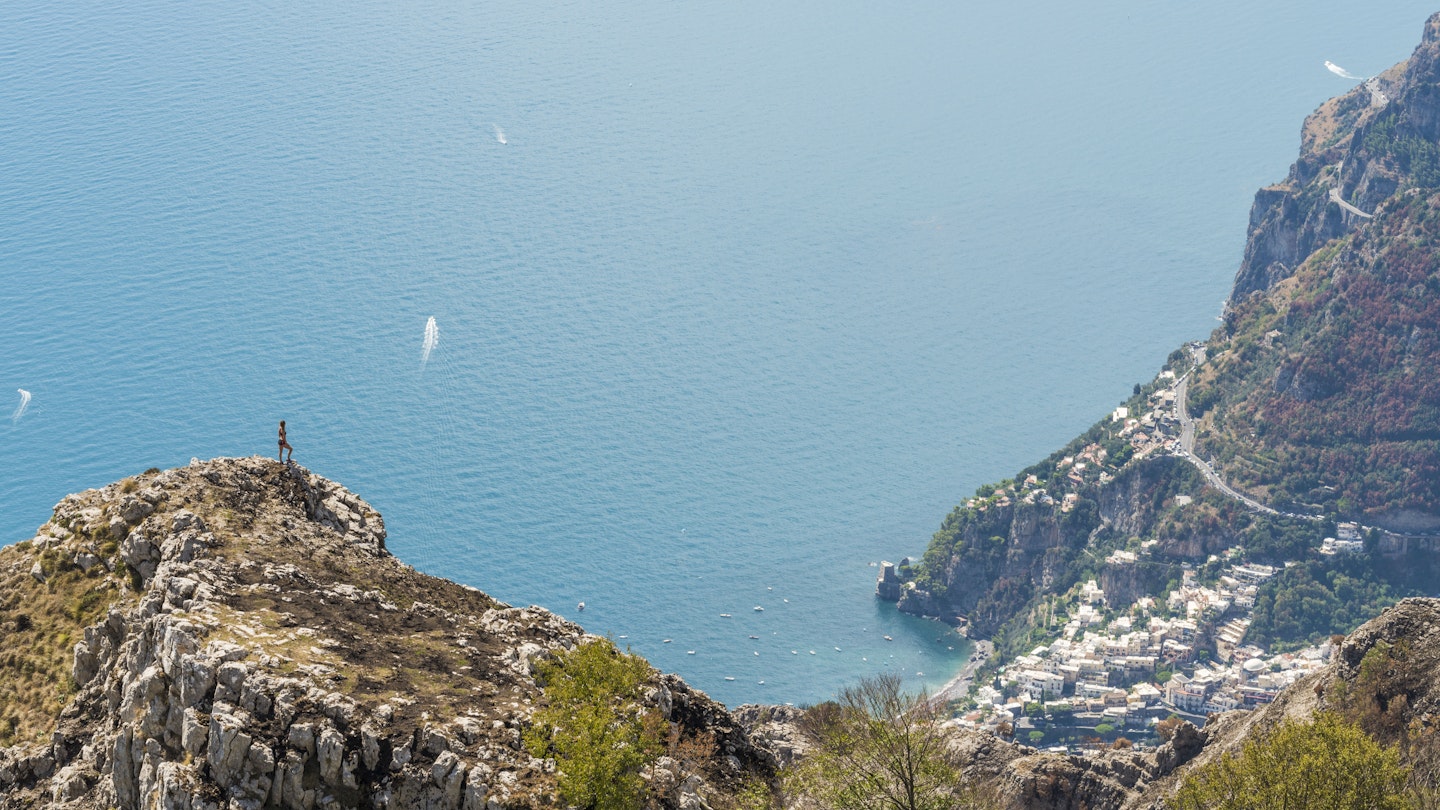Discover Italy’s Natural Wonders
Italy’s fortes extend beyond its galleries, wardrobes, and dining rooms. The country is one of nature’s masterpieces, showcasing extraordinary natural diversity matched by few. From the icy Alps and glacial lakes in the north to fiery craters and turquoise grottoes in the south, Italy is a place for doing as well as seeing—truly impressive for a country not much bigger than Arizona.
Before planning any trip, please check the latest local travel restrictions and always follow government advice.
Amalfi Coast
Italy’s most celebrated coastline is a gripping strip: coastal mountains plunge into creamy blue sea in a prime-time vertical scene of precipitous crags, sun-bleached villages, and lush woodland. Between sea and sky, mountain-top hiking trails deliver Tyrrhenian panoramas fit for a god. While some may argue that the peninsula’s most beautiful coast is Liguria’s Cinque Terre or Calabria’s Costa Viola, it is the Amalfi Coast that has seduced and inspired countless renowned artists, from Wagner and DH Lawrence to Tennessee Williams, Rudolf Nureyev, and Gore Vidal.
Moreover, the region is not just about turquoise seas and cinematic piazzas; it is home to some of Italy’s finest hotels and restaurants. It stands as one of the country’s top hiking destinations, with well-marked trails offering the chance to escape the star-struck coastal crowds.

Mount Etna
Known to the Greeks as the ‘column that holds up the sky’, Mount Etna is not only Europe’s largest volcano, it’s also one of the world’s most active. The ancients believed the giant Tifone (Typhoon) lived in its crater, lighting the sky with spectacular pyrotechnics. Towering at 3,326 meters, it dominates Sicily’s Ionian Coast. Whether you tackle it on foot or on a guided 4WD tour, scaling this time bomb rewards you with towering views and the thrill of having come face-to-face with a towering natural wonder.
Since 1987, the volcano and its slopes have been part of a national park, the Parco dell’Etna. Encompassing 581 sq km and hosting 21 towns, the park’s varied landscape ranges from the severe, snowcapped mountaintop to lunar deserts of barren black lava, beech woods, and lush vineyards producing the area’s highly rated DOC wine.

The Dolomites
Scour the globe and you’ll find plenty of taller, bigger, and more geologically volatile mountains, but few can match the romance of the pink-hued, granite Dolomites. Perhaps it’s their harsh, jagged summits, the vibrant skirts of spring wildflowers or the rich cache of Ladin legends. It could also be the magnetic allure of money, style, and glamour at Italy’s most fabled ski resort, Cortina d’Ampezzo, or the linguistic curiosity of the picture-postcard mountain village Sappada. Whatever the reason, this tiny corner of northern Italy takes seductiveness to dizzying heights.
Consequently, Europeans flock here in winter for hospitable resorts, sublime natural settings, and extensive ski networks. Enjoy downhill and cross-country skiing, snowboarding, or get ready for sci alpinismo (an adrenaline-spiking mix of skiing and mountaineering), freeride, and a variety of other winter adventure sports including those on the legendary Sella Ronda circuit. Furthermore, this destination is equally mesmerizing in summer, offering excellent hiking, stunning views, and fresh, fragrant air.

Lago di Como
If it’s prestigious enough for the Clooneys and vacationing Obamas, then it’s certainly good enough for any traveler. Nestled in the shadow of the Rhaetian Alps, dazzling Lago di Como is Lombardy’s most spectacular lake. Its lavish Liberty-style villas attract movie moguls, fashion royalty, and Arab sheikhs. The lake’s siren calls include gardens at Villa Melzi d’Eril, Villa Carlotta, and Villa Balbianello, which blush pink with camellias, azaleas, and rhododendrons during April and May.
For those less flush, Como’s lush green hinterland promises bags of free, wonderfully scenic hiking. The mountainous terrain provides numerous opportunities for breathtaking views of the lake and its charming towns. Consequently, with a fraction of the visitors compared to Lake Maggiore or Lake Garda, Lake Como and its surrounding area offer travelers a genuine sense of discovery.
Parco Nazionale d’Abruzzo, Lazio e Molise
Italy’s second-oldest national park is also one of its most ecologically rich. Established by royal decree in 1923, it began as a modest 5-sq-km reserve that gradually evolved into the 440-sq-km protected area it is today. This evolution wasn’t straightforward; the park was temporarily abolished in 1933 by the Mussolini government, and returned to the fold in 1950, only to face further encroachment from housing, road building, and ski development.
Nevertheless, the park has remained at the forefront of Italy’s conservation movement, reintroducing and protecting wildlife such as the Abruzzo chamois, Apennine wolf, lynx, deer, and most notably, the Marsican bear—the park is home to Italy’s largest surviving enclave of these endangered animals.
Today, the park extends over three regions, with over half of it covered in thick beech forests. Thanks to its long history, it attracts more visitors than other parks—around two million annually.





